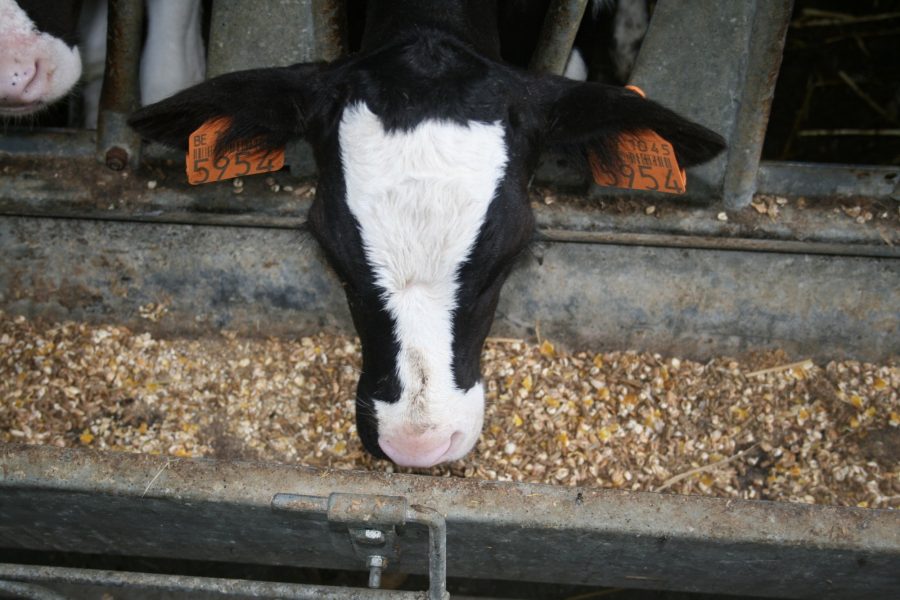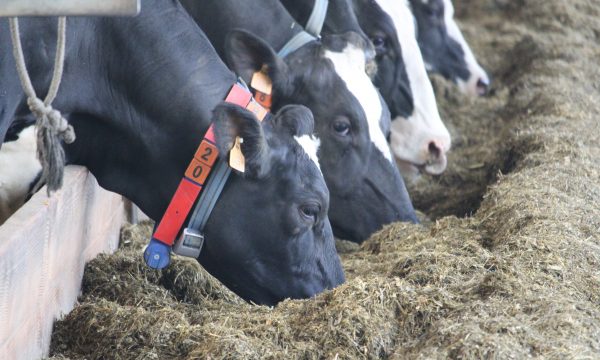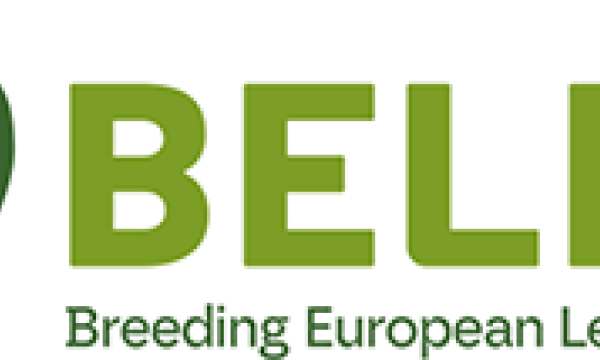Project news Methane emissions in cattle: can transplantation of rumen flora reduce emissions?

As part of its climate research, ILVO conducted the first ever trial in which the rumen microbiome was transferred from one cow to another. The starting point was that cows produce a different amount of methane even when given the same feed. This could indicate differences in the rumen microbiome. By analogy with transplants of fecal intestinal flora in humans, this might possibly be influenced. "Unfortunately, within the total population of microorganisms present, methane producers appear to be stably present in all cows. Other bacterial species did change after flora transfer," says ILVO-UGent researcher Thijs De Mulder at the end of his PhD. The results of this study further guide methane-reducing research strategies in dairy farming.
All ruminants and therefore also cattle emit methane as a result of microbial processes in the rumen. The rumen microbiome (the rumen is the first of the four cow stomachs) consists of a diverse collection of microorganisms which ferment the crude fiber and carbohydrates from the feed and in the process convert them into energy for the cow and for the microorganisms themselves. Over the past 10 years, a method has developed in science - metagenomics - in which DNA is analyzed, not of a single organism, but of an entire population of organisms. A total flora (or microbiome) with all species present can thus be mapped both qualitatively and quantitatively. A complete picture emerges, as it were, of which and how many microorganisms are present. Karen Goossens: "For the past five years, ILVO has also had a genomics platform at its disposal, which facilitates all kinds of genetic population research for plant, soil, animal and food research. With De Mulder's PhD, ILVO also started to study the rumen microbiome, which will certainly be followed up in other research projects. With the molecular technique, population shifts after internal or external changes can be detected and followed up." By the way, before the time of genomics methodology, it was very difficult to map the microbiome in the rumen. The microbiota in the rumen of living animals are very difficult to culture on a petri dish. And you needed those cultures to identify the bacterial species in the lab via PCR.
The bacterial community in the cow rumen consists of a core of dominant and ubiquitous species, complemented by a range of less dominant bacteria. The methane-producing microorganisms are the so-called methanogens (belonging to the Archaea). These are ancient primordial bacteria. Their function is, among other things, to process hydrogen gases generated during the fermentation of food ingested. If not, digestion would come to a complete halt. However, the hydrogen gas is converted by the methanogens into methane, a greenhouse gas that the cow burps out, giving cattle a negative climate image.
Thijs De Mulder's research shows that Archaea belong to a ubiquitous group within the rumen microbiome. The Archaea in the bovine rumen are characterized by low diversity and richness. "Precisely the methane-producing microbiota are stably present in all individual cows we studied. A transfer of rumen contents from one cow to another does not immediately result in a changed population or amount of Archaea".
"To what extent are the microorganisms in the overall rumen microbiome? And to what extent is methane emission itself influenced by the breed and by the individual cow (independent of feed)," De Mulder wondered. "And as a result, might farmers be able to feed their herd a rumen flora with less methane emission?" In any case, the breed does not matter much, according to the doctoral study. The composition of the methanogens group remains similar and stable when comparing Holstein-Friesian dairy cattle and Belgian Blue beef cattle. The differences between both methane emissions are mainly due to their feed intake. Individual differences between cows do exist, but the explanation does not lie in the part of the microorganisms that produces methane (the Archaea). "We know this from the experimental transfers of the rumen contents of a donor cow with higher methane emissions to the rumen of 3 other cows with lower methane emissions. The composition of the microbiome evolved through the transfer. After six weeks, the diversity in all cows was back to its pre-transfer level. Every cow had a new adapted microbiome in her rumen, which was different from her original microbiome, but which also did not completely resemble the original microbiome of the donor cow. But it was mainly the less dominant bacteria that changed and thus not the ubiquitous Archaea."
Initial trials of rumen flora transplantation showed that host intervention does not have a major impact on methane emissions. However, that doesn't mean we haven't learned a lot. "There are other related avenues of thought in the pipeline that could reduce methane production from the cow," says Karen Goossens, "namely working further on feed composition and on and feed additives and enzymes." These do not affect the quantity or nature of the Archaea, but their effect does.
Project title: Study of gastrointestinal communities of cows and pigs by metagenomics, with the focus on methane emissions and antibiotic resistance
Term: 2014 - 2018
Partner: UGent


